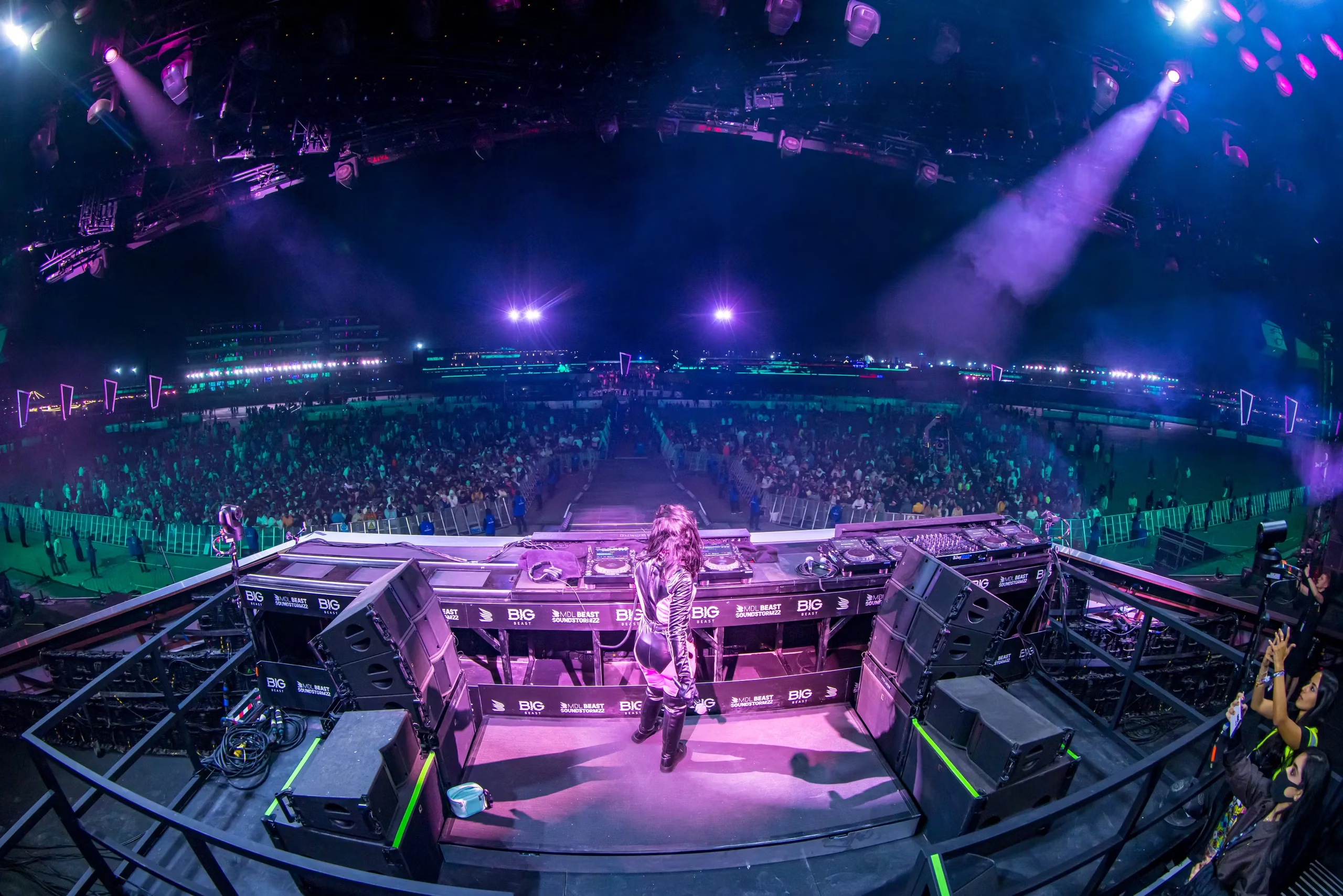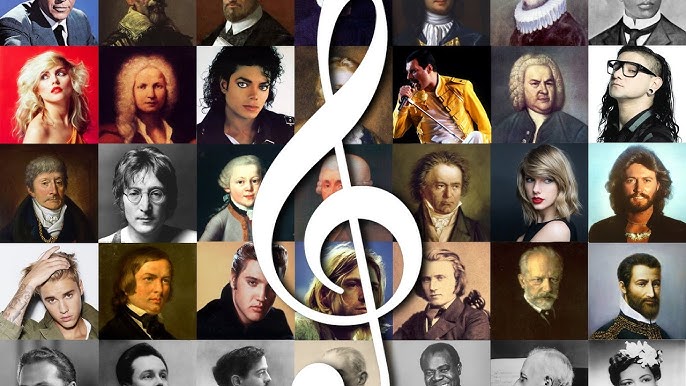
Electronic Dance Music (EDM) has become a global cultural force, dominating clubs, festivals, and streaming playlists. But the journey to its current mainstream status is anything but simple. With roots tracing back to the early 1980s, EDM has grown and diversified into an array of subgenres, each with its own distinct style and history. Among the most influential genres in this evolution are House and Techno, two cornerstone sounds that shaped the landscape of electronic dance music.
This article delves into the origins, evolution, and lasting impact of House and Techno, exploring how these genres sparked a movement that continues to shape the future of EDM today.
1. The Birth of House Music: Chicago’s Dance Floor Revolution
House music emerged in the early 1980s in Chicago, at a time when the world of electronic music was still in its infancy. Drawing inspiration from disco, funk, and soul, house music introduced a steady, 4/4 beat, synthesizer melodies, and repetitive basslines, all designed to get people moving on the dance floor.
Key Influences and Origins:
- Disco Roots: House’s origins are closely tied to the decline of disco, which left a gap for new dance music. DJs in Chicago, like Frankie Knuckles and Larry Levan, began experimenting with electronic elements in their mixes, bringing in influences from early synth pop and industrial music.
- The Warehouse Club: House music takes its name from the legendary Warehouse Club in Chicago, where DJ Frankie Knuckles was a key figure. It was here that the 4/4 beat became a defining feature of the genre.
- Technology: The rise of drum machines like the TR-808 and synthesizers like the Roland TB-303 made it easier for producers to create their own tracks. This accessibility allowed house music to evolve rapidly and spread beyond Chicago, first to other American cities and then globally.
Signature Sound:
House music’s signature sound is built around a deep bassline, catchy vocal loops, and soulful melodies. The genre evolved into different substyles, such as Deep House (which incorporates jazzy, atmospheric elements) and Progressive House (which focuses on longer builds and drops).
2. Techno Takes Root: Detroit’s Dark and Futuristic Sound
While house music was taking over Chicago, another major electronic genre was evolving in Detroit. Techno emerged in the mid-1980s, primarily through the work of producers like Juan Atkins, Derrick May, and Kevin Saunderson, who are often credited as the “Belleville Three” — a trio of Detroit producers that pioneered the sound of techno.
Key Influences and Origins:
- Futuristic Vision: Techno was heavily inspired by science fiction, robotics, and the concept of a mechanized future. Unlike house music’s soulful vibe, techno embraced a more futuristic and industrial sound, with repetitive beats and synthetic sounds mimicking machines.
- Detroit’s Industrial Landscape: Detroit’s industrial backdrop — with its factories and automotive roots — had a huge influence on the harsh, mechanical sound that became characteristic of techno. It’s no surprise that the genre’s focus on rhythm and repetition mirrored the city’s own relentless work ethic and factory-driven culture.
- The Berlin Connection: Although techno originated in Detroit, its true international expansion happened through Berlin in the 1990s, where the city’s underground club scene embraced techno as its core sound. The Berlin techno scene became synonymous with the underground rave culture and the Berghain club, which remains one of the world’s most iconic techno venues.
Signature Sound:
Techno’s sound is characterized by synthesized loops, minimal melodies, and a focus on rhythmic patterns. The genre is often more repetitive and mechanical than house music, with a greater emphasis on evolving soundscapes. Over time, techno has split into subgenres like Minimal Techno (focused on stripped-down, minimalistic beats) and Hard Techno (with aggressive basslines and intense drops).
3. The Divergence: House vs. Techno
While both genres share roots in the electronic dance movement of the ’80s, they quickly branched off into distinctive styles.
- House Music’s Emphasis on Soul and Melody: House music tends to incorporate soulful, vocal-driven melodies, often drawing from disco and R&B influences. It’s known for its warmth, groove, and accessibility, with its repetitive beats designed to keep dancers moving all night.
- Techno’s Focus on Rhythm and Atmosphere: Techno, on the other hand, is colder and more mechanical in its sound. It’s less about melodies and more about intricate rhythm patterns and evolving soundscapes. Techno tracks often build slowly, creating an immersive experience with atmospheric pads and minimalistic structure.
While house music found mainstream success, particularly in clubs and on the radio, techno remained deeply rooted in underground scenes, especially in Europe. However, the lines between house and techno often blurred as producers began to experiment and incorporate elements from both genres.
4. The Globalization of EDM: From Underground to Mainstream
As EDM evolved over the years, house and techno both expanded and adapted, influencing a variety of subgenres that would dominate the music scene into the 21st century.
- House Music’s Expansion: House music exploded into the global music scene in the 1990s and 2000s, influencing the rise of Eurodance, progressive house, and big room house. Artists like David Guetta, Calvin Harris, and Swedish House Mafia helped bring house-based sounds into the mainstream, particularly with their chart-topping hits that featured catchy melodies and accessible drops.
- Techno’s Underground Influence: Techno, while never as mainstream as house, cultivated a massive global underground following. The rave scene in the 1990s and early 2000s helped spread techno worldwide, with iconic festivals like Awakenings in the Netherlands and Movement in Detroit celebrating the genre’s raw, experimental nature. Techno influenced other genres like trance, minimal, and even EDM.
5. EDM Today: House and Techno’s Lasting Legacy
In the 2010s, EDM exploded in popularity, becoming a multi-billion dollar industry. However, house and techno remain the foundational pillars of modern dance music.
- House’s Influence on Mainstream Pop: Many modern pop songs, particularly in the US, continue to draw from house music’s rhythms and catchy beats. Artists like Dua Lipa with tracks like “Physical” and Calvin Harris continue to inject house-inspired elements into their songs, while DJs like Martin Garrix and Zedd maintain house influences in their EDM hits.
- Techno’s Underground Appeal: Techno is still largely associated with the underground scene, with techno festivals like Dekmantel in Amsterdam and Awakenings in the Netherlands still drawing huge crowds. Berlin’s Berghain remains a mecca for techno lovers, and the genre continues to evolve with subgenres like industrial techno, acid techno, and hard techno gaining traction.
Both house and techno, though diverging in sound, remain intertwined in the fabric of EDM today. The accessibility and mainstream appeal of house music blends with the darker, experimental nature of techno, creating an ever-evolving genre that continues to shape the future of electronic dance music.
6. The Future of EDM: What’s Next for House and Techno?
As EDM continues to grow, both house and techno will likely continue to evolve, merge with other genres, and find new audiences. Innovations in music production technology, changing social contexts, and the rise of new artists could bring about exciting transformations in both styles.
- Collaboration Between Genres: We’re already seeing more crossovers between house, techno, and other genres like trap, future bass, and bass house. This fusion could lead to even more genre-bending and exciting new sounds.
- Techno’s Influence on Pop and Other Mainstream Genres: With artists like The Weeknd experimenting with darker, electronic-inspired sounds, we may see more elements of techno seeping into mainstream pop, as well as other genres like hip-hop and alternative rock.
7. Conclusion: A Legacy of Innovation and Transformation
From house music’s soulful origins in Chicago to techno’s gritty, futuristic soundscapes in Detroit, both genres have played a key role in shaping the sound of modern EDM. While house music has captured the mainstream with its catchy, feel-good vibes, techno has remained a staple of underground rave culture, fueling the creative and experimental side of electronic music.
As EDM continues to evolve, house and techno’s influence remains undeniable, and their legacy will continue to resonate with future generations of producers, DJs, and fans. The journey from house to techno is not just about genre evolution; it’s about the freedom to explore new sounds, push boundaries, and bring people together through the universal language of dance.






